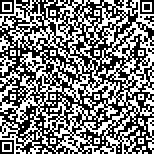高谦,李宝福,刘冰,等.CT引导下脉冲射频联合神经阻滞治疗带状疱疹后神经痛的疗效影响因素分析[J].中华物理医学与康复杂志,2024,46(4):337-341
扫码阅读全文

|
| CT引导下脉冲射频联合神经阻滞治疗带状疱疹后神经痛的疗效影响因素分析 |
|
| |
| DOI:10.3760/cma.j.issn.0254-1424.2024.04.010 |
| 中文关键词: CT引导 脉冲射频 神经阻滞 带状疱疹后神经痛 疗效 影响因素 Logistic回归分析 |
| 英文关键词: Pulsed irradiation Radiofrequency irradiation Nerve blocking Postherpetic neuralgia |
| 基金项目: |
|
| 摘要点击次数: 3109 |
| 全文下载次数: 3342 |
| 中文摘要: |
| 目的 探讨CT引导下脉冲射频联合神经阻滞治疗带状疱疹后神经痛(PHN)疗效的影响因素。 方法 对102例接受CT引导下脉冲射频联合神经阻滞治疗的PHN患者进行回顾性分析,统计患者的简化McGill疼痛问卷(SF-MPQ)总分和疼痛视觉模拟评分法(VAS)评分。根据治疗后6个月的SF-MPQ总分及随访情况,将患者分为疗效良好组(44例)和疗效不佳组(58例)。采用Logistic单因素和多因素回归法分析影响疗效的独立相关因素。 结果 2组患者治疗后1周、1个月、3个月、6个月的疼痛VAS评分均较组内治疗前下降(P<0.05),且疗效良好组各时间点的疼痛VAS评分均较疗效不佳组低(P<0.05)。多因素Logistic回归分析显示,年龄>60岁[β=0.972,95%CI(1.084,6.448),P=0.033]、病程>6个月[β=1.211,95%CI(1.243,9.068),P=0.017]、治疗前疼痛VAS评分7~10分[β=1.029,95%CI(1.642,4.769),P<0.001]均是影响疗效的独立危险因素(P<0.05)。采用利多卡因作为神经阻滞药物[β=-0.792,95%CI(0.235,0.873),P=0.019]、持续使用镇痛药物时间>2周[β=-1.047,95%CI(0.164,0.749),P=0.007]是疗效的保护性因素(P<0.05)。 结论 CT引导下脉冲射频联合神经阻滞可有效缓解PHN,其疗效与患者的年龄、病程、治疗前VAS评分、治疗时采用的神经阻滞药物种类、持续使用镇痛药物的时间有关。 |
| 英文摘要: |
| Objective To explore the factors influencing the effectiveness of CT-guided pulsed radiofrequency irradiation combined with nerve blocking in the treatment of post-herpetic neuralgia (PHN). Methods The records of 102 patients with PHN who received CT-guided pulse radiofrequency combined with nerve blocking were examined retrospectively. Their Simplified McGill Pain Questionnaire (SF-MPQ) scores and visual analogue scale pain ratings were used. The subjects were divided into a good efficacy group (44 cases) and a poor efficacy group (58 cases) based on the SF-MPQ total scores and follow-up status 6 months after treatment. Univariate logistic analysis and multivariate regression analysis were used to highlight the independent factors predicting efficacy. Results The average pain scale scores of both groups decreased continuously during and after the treatment. The good efficacy group of course reported significantly lower pain ratings throughout. The multivariate logistic regressions showed that age>60, disease duration>6 months or a pain rating of 7 to 10 points before the treatment are all potentially useful predictors of efficacy. Nerve blocking with lidocaine and continuous use of analgesic drugs over more than 2 weeks were both identified as significantly protective. Conclusions CT-guided pulsed radiofrequency irradiation combined with nerve blocking can effectively relieve PHN. Its efficacy is related to age, disease course, pain level before treatment, types of nerve blocking drugs administered and continuous use of analgesic drugs. |
|
查看全文
查看/发表评论 下载PDF阅读器 |
| 关闭 |